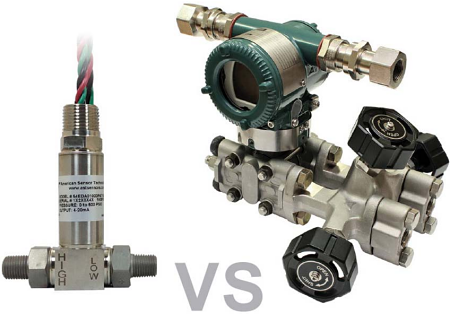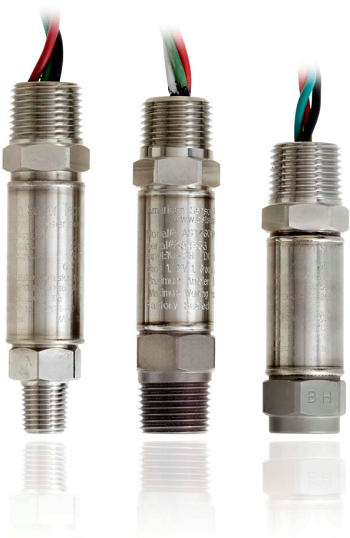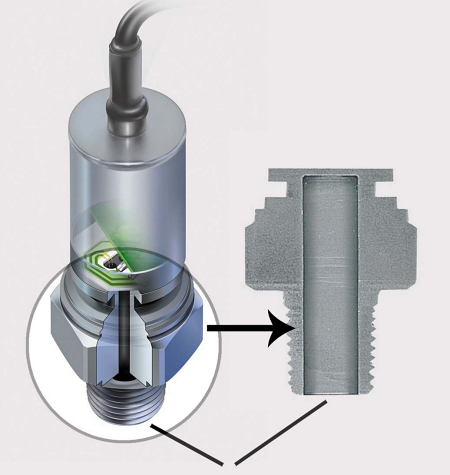
Crude oil prices are currently at half the price from a year ago and pressure, no pun intended, is put on companies to reduce costs while operating more efficiently. In many cases, equipment manufacturers set a target cost reduction percentage to maintain previous production levels.
This strategy can be effective, however there is an alternative consideration. Does the existing system require the same instrumentation to achieve the end result? Here are four thoughts on how engineers have decided against the traditional process type transmitter and replace it.
1. Cost
Many system designers install differential pressure transmitters on air and natural gas compressors to monitor filters for maintenance purposes. As the difference in pressure increases before and after the filter, the output signal of the transmitter increases and the PLC notifies the user to change the filter.
While it is a very simple concept with fairly benign liquids and gases, like oil and air, respectively, engineers continue to specify a transmitter that costs around $2,000. Additionally, the valves and hardware required to connect to the device can be extremely expensive. Differential pressure transducers, which provide an output based on a differential pressure drop, are available with the same basic functionality for hazardous locations at $500 (see fig.1).
![Fig. 1: Differential pressure measurement is the difference in pressure between two points in a system. For filtration applications, the upstream side [A] is positioned before the filter [B], whereas the downstream side [C] is after the filter. A differential pressure sensor can be used to monitor the cleanliness of a filter in either liquid or gas applications.](https://qtxasset.com/files/sensorsmag/nodes/2015/17950/FIG_1.png)
Fig. 1: Differential pressure measurement is the difference in pressure between two points in a system. For filtration applications, the upstream side [A] is positioned before the filter [B], whereas the downstream side [C] is after the filter. A differential pressure sensor can be used to monitor the cleanliness of a filter in either liquid or gas applications.
2. Size and Weight
The size of a transmitter can be dictated by the transmitter manufacturer's features built into the design. With more complicated electronics and displays, additional hardware is required to fit the envelope. Smaller designs can permit more hardware in a smaller area or using transmitters closer to the process not possible with larger designs (see fig. 2).

Fig. 2: A smaller, more compact differential pressure transducer (left) can permit hardware installations in smaller areas closer to the process.
Aside from the limitations of fitting the transmitter in certain areas of the system, added weight can be an issue related to logistic costs. For stationary systems, the weight of the transmitter is not going to change the transportation cost of the equipment, but the cost of receiving the transmitter from the supplier could be three times more than a more compact transmitter. If insurance is added onto the shipment and expedited service is needed, the soft cost of shipping becomes a larger overall cost.
3. Installation Complexity
Mechanical and electrical functionality are both strong reasons to consider a more basic pressure transmitter. Five-way valves, diaphragm isolators, reducers, and mounting brackets are common barriers for process style pressure transmitters. Limitations in sensor materials can add a layer of complexity to ensure that the liquid or gas being monitored does not corrode and break down.
Basic "stick" transmitters can offer cost savings in their flexibility. The materials and sensor technologies available in this type of transmitter create a situation where systems can last longer with lower overall cost (see fig. 3). The hardware requirements can be as simple as a quarter turn valve or T fitting. There is typically a low amount of mass that requires it to be mounted to a bracket.

Fig. 3: A fail mode indicator option of these explosion proof pressure transmitters allows users to choose an output signal that rails or drops during a fault condition, providing better control on how their systems react should sensors failure. For example, if the sensor fails while running a system, the output signal can go 5% above the maximum or 5% below the minimum to indicate a transmitter problem. Conditions such as electrical overload or extreme pressure transients cause pressure transmitters to fail. In these events, users can control how their systems react to failures.
The output signal of the transducer is related to both the cost and the complexity. Many process style pressure transmitters have design features that make the product convenient for a number of installations.
Digital communications, turn-downs, and field calibration are all great features for certain applications when used. However, in some cases the features create a liability for the transducer being adjusted by non-certified technicians. The added features often come at a cost if they are not being utilized.
4. Performance
One of the most difficult tasks for engineers is comparing data sheets of transmitters. The terms used to describe performance can be specified in different ways, various formats, and using either maximum errors or typical values. There is no argument that some expensive pressure transmitters are extremely accurate. For applications where the transmitter is being used to ensure billing to API standards, the accuracy translates to dollars and a lower accuracy transmitter can cost more money. To revisit the filter application, this is a case where higher accuracy might come at the sacrifice of reaching an overall cost point.
In addition to lower cost and higher performance electronics, the accuracy, repeatability, and long-term stability of stick-style pressure transmitters has increased over time with new sensor technology developments.
With significant advancements in human machine interfaces (HMIs) over the past ten years, design engineers have more flexibility to dial in the performance of the transmitter by plotting values in the system. Technology has made it easier to bridge the gap between lower cost transducers with industrial specifications and higher cost process transmitters (see fig. 4).

Fig. 4: Shown is a cutaway of a pressure transmitter from American Sensor Technologies that uses a single piece of metal and contains no silicone oil, O-rings, or welds. This MEMs pressure sensor technology completely isolates the liquid or gas to the process connections, thus eliminating contamination risk. The low strain level (typically 275 microstrain) on the diaphragm results in accurate, repeatable measurements.
Conclusion
The universal fear of using something less expensive will always be present. Cost does not always translate into performance and cost is not only the price paid for a product or service. Alternatives are out there, so ask yourself these four questions:
- Am I going to use all of the features?
- Can I simplify the overall design to reduce cost?
- Do I want or need higher performance?
- Can I achieve the same performance by alternate methods?
About the Author
Greg Montrose is the Sales and Marketing Analyst at American Sensor Technologies, now part of the Sensor Solutions team at TE Connectivity. With ten years of experience in instrumentation and controls, he has worked in both sales and marketing functions supporting various industrial, aerospace, alternative energy, and hazardous location projects and applications.
Related Stories
Enhancing Sensor Reliability through Venting
Fundamentals of Pressure Sensor Technology